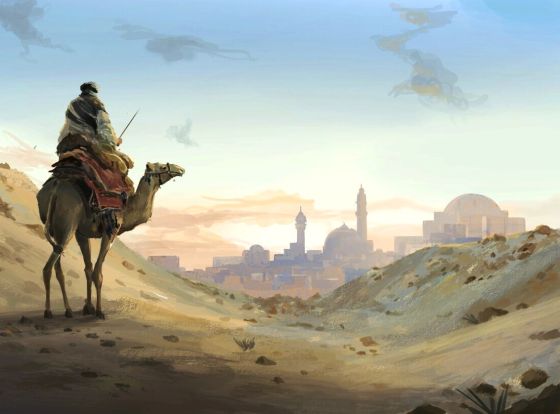Difference between revisions of "Buraydah"
Tao alexis (talk | contribs) |
Tao alexis (talk | contribs) |
||
| (3 intermediate revisions by the same user not shown) | |||
| Line 1: | Line 1: | ||
| − | + | [[File:Buraydah.jpg|right|560px|thumb]] | |
| + | The '''Emirate of Buraydah''' is an independent entity situated amidst the vast, arid landscapes of the Arabian Plateau. Land-locked and located on the periphery of [[Ottoman Empire|Ottoman]] [[Babylonia]], Buraydah is bordered by the Sheikdom of [[al'Labba]], the Principality of [[Sulaim]], the Utub of [[Nejd]] and on the south, the al-Dahna desert, which is characterised by extensive sand dunes and arid conditions. | ||
| − | {| class="wikitable | + | Buraydah is renowned for its flourishing date palm groves, which not only adorn its landscape but also form the lifeblood of its economy. The meticulous cultivation of dates in the region allows Buraydah to thrive as a thriving hub of trade and commerce. A diverse amalgamation of cultures and influences gives rise to a unique and dynamic cultural milieu, fostering the exchange of ideas, traditions and artistic expressions. Such prominence established the city of Buraydah as a jewel in the heart of Arabia, leaving an indelible mark on the historical landscape of the Arabian Peninsula. The emirate covers an area of 67.2 [[20-mile Hex Map|hexes]], with a population of 16,434. |
| − | + | ||
| − | ! | + | == Geography == |
| − | + | The region is a flat and sandy terrain, typical of arid desert environments. The city experiences a hot climate, with sweltering summers and mild winters, and is known for its scarcity of rainfall. During the scorching summer months, conditions become [[Sweltering Conditions|sweltering]] or [[Feverish Conditions|feverish]]. | |
| + | |||
| + | == History == | ||
| + | Prior to the spread of Islam, the local tribes were primarily nomadic, engaging in activities such as agriculture and animal husbandry. With the advent of Islam in the 7th century, Buraydah embraced Islam and played a role in the early Islamic expansion. The city's location along trade routes contributed to its growth as an important commercial center during the Islamic Caliphates, including the Umayyad and Abbasid dynasties. | ||
| + | |||
| + | In the medieval period, Buraydah continued to flourish as part of the broader Islamic civilization. Following the 16th century, the Ottoman Empire expanded its influence into the Arabian Peninsula. Efforts have been made by the Ottomans to assume control over the region, but as yet that seems unlikely. | ||
| + | |||
| + | == Settlements == | ||
| + | {| class="wikitable" style="float:left; margin-right: 25px; text-align: center; background-color:#F7E7CE;" | ||
| + | |+Settlements | ||
| + | ! style="width: 85px|Name !! style="width: 65px"|Population || style="width: 65px"|Year<br>founded || style="width: 215px"|Product References | ||
|- | |- | ||
| align="left"|Buraydah || align="right"|375 || align="center"|1575 | | align="left"|Buraydah || align="right"|375 || align="center"|1575 | ||
| Line 11: | Line 22: | ||
|} | |} | ||
| − | + | [[Category: Places in Arabia]][[Category: Reviewed]] | |
| − | |||
| − | |||
| − | [[Category: | ||
Latest revision as of 03:15, 17 October 2023
The Emirate of Buraydah is an independent entity situated amidst the vast, arid landscapes of the Arabian Plateau. Land-locked and located on the periphery of Ottoman Babylonia, Buraydah is bordered by the Sheikdom of al'Labba, the Principality of Sulaim, the Utub of Nejd and on the south, the al-Dahna desert, which is characterised by extensive sand dunes and arid conditions.
Buraydah is renowned for its flourishing date palm groves, which not only adorn its landscape but also form the lifeblood of its economy. The meticulous cultivation of dates in the region allows Buraydah to thrive as a thriving hub of trade and commerce. A diverse amalgamation of cultures and influences gives rise to a unique and dynamic cultural milieu, fostering the exchange of ideas, traditions and artistic expressions. Such prominence established the city of Buraydah as a jewel in the heart of Arabia, leaving an indelible mark on the historical landscape of the Arabian Peninsula. The emirate covers an area of 67.2 hexes, with a population of 16,434.
Geography
The region is a flat and sandy terrain, typical of arid desert environments. The city experiences a hot climate, with sweltering summers and mild winters, and is known for its scarcity of rainfall. During the scorching summer months, conditions become sweltering or feverish.
History
Prior to the spread of Islam, the local tribes were primarily nomadic, engaging in activities such as agriculture and animal husbandry. With the advent of Islam in the 7th century, Buraydah embraced Islam and played a role in the early Islamic expansion. The city's location along trade routes contributed to its growth as an important commercial center during the Islamic Caliphates, including the Umayyad and Abbasid dynasties.
In the medieval period, Buraydah continued to flourish as part of the broader Islamic civilization. Following the 16th century, the Ottoman Empire expanded its influence into the Arabian Peninsula. Efforts have been made by the Ottomans to assume control over the region, but as yet that seems unlikely.
Settlements
| Name | Population | Year founded |
Product References |
|---|---|---|---|
| Buraydah | 375 | 1575 | |
| Qusaybah | 814 | 565 |
